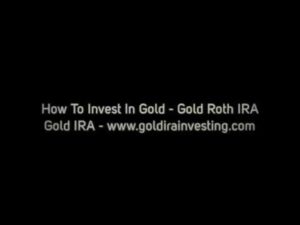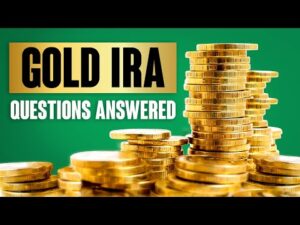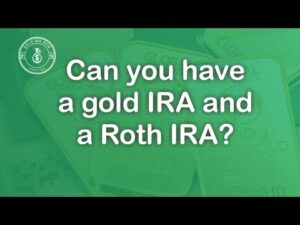
Bitcoin's Price Fluctuations
On Monday, November 20, 2023, bitcoin (BTC) is trading slightly above the $37K mark, signaling the start of the week. In the past 24 hours, BTC's price has ranged from $36,441 to $37,516 per unit. Currently, bitcoin trades have generated a global trading volume of $15.55 billion.
Optimistic Outlooks Backed by Key Technical Signals
In the midst of a fluctuating cryptocurrency landscape, bitcoin's latest price trends suggest optimistic outlooks, supported by key technical indicators. Signals such as the relative strength index (RSI), stochastic, and commodity channel index (CCI) provide a multifaceted perspective of the market, along with important moving average statistics.
RSI Indicates Balanced Market Condition
As of November 20, 2023, bitcoin's RSI stands at 63, indicating a balanced market condition. This figure suggests that BTC is not excessively bought or sold, but it holds the potential for price increase or decrease in the near future. Market participants should closely monitor RSI shifts, as a surge above 70 may indicate overbuying, while a fall below 30 could signify oversold conditions.
Stochastic Oscillator Mirrors Neutral Market View
The Stochastic oscillator, currently at 74, reflects a similar neutral market view. Approaching the higher end of its scale, it suggests a potential overbought state of the BTC market but remains within a margin for possible price escalation. However, caution is advised, as a consistent reading above 80 in the Stochastic could signal a forthcoming reversal, particularly if the market perceives BTC as overpriced or if the market becomes too hot.
CCI Nearing Overbought Zone
With a CCI value of 88, the market is approaching the overbought zone but has not yet crossed that line. A CCI exceeding +100 usually indicates an overbought situation, while a number below -100 denotes an oversold state. Today's exponential and simple moving averages (EMAs and SMAs) across different timeframes all point towards a strong bullish trend in the market.
Short-Term Bullish Tendencies
Both the 10-day EMA and SMA, positioned at $36,715 and $36,814 respectively, signal bullish tendencies in the short run. The more extended averages, such as the 200-day EMA and SMA at $29,293 and $29,006, solidify the robustness of the current upward trajectory as they sit noticeably below today's price. Currently, the short-term trend appears to be irregular with some bullish leanings, indicating a moderate confidence level. Such uneven trading actions could escalate short-term market volatility.
Bullish and Bearish Perspectives
Bull Verdict:
The technical analysis for Bitcoin as of November 20, 2023, reveals some bullish sentiment. The key indicators, including a neutral but leaning-towards-bullish RSI, a Stochastic value hinting at potential growth, and a CCI approaching overbought territory, all suggest a market gearing toward an upward trajectory.
Bear Verdict:
Despite the current bullish indicators, a cautious bearish perspective emerges for Bitcoin's future as of November 20, 2023. The proximity of RSI and Stochastic values to overbought thresholds could signal an impending market saturation, potentially leading to a reversal. The CCI nearing the overbought zone further underscores this caution.
To stay updated with weekly price analysis, register your email here:
What are your thoughts on Bitcoin's market action on Monday morning? Share your opinions in the comments section below.
Frequently Asked Questions
Are You Ready to Invest in Gold?
This will depend on how much money and whether you were able to invest in gold at the time that you started saving. If you are unsure which option to choose, consider investing in both options.
Gold offers potential returns and is therefore a safe investment. It is a good choice for retirees.
While many investments promise fixed returns, gold is subject to fluctuations. Its value fluctuates over time.
However, it doesn't necessarily mean that you shouldn't invest your money in gold. Instead, it just means you should factor the fluctuations into your overall portfolio.
Another advantage of gold is its tangible nature. Gold is much easier to store than bonds and stocks. It can also be carried.
As long as you keep your gold in a secure location, you can always access it. Physical gold is not subject to storage fees.
Investing in gold can help protect against inflation. As gold prices rise in tandem with other commodities it can be a good hedge against rising cost.
A portion of your savings can be invested in something that doesn't go down in value. Gold rises in the face of a falling stock market.
Investing in gold has another advantage: you can sell it anytime you want. Like stocks, you can sell your position anytime you need cash. You don't have to wait for retirement.
If you do decide to invest in gold, make sure to diversify your holdings. You shouldn't try to put all of your eggs into one basket.
Don't buy too many at once. Start with a few ounces. Continue adding more as necessary.
It's not about getting rich fast. Rather, it's to build up enough wealth so you won't need to rely on Social Security benefits.
Although gold might not be the right investment for everyone it could make a great addition in any retirement plan.
What are the benefits to having a gold IRA
You can save money on retirement by putting your money into an Individual Retirement Account. It is tax-deferred until it's withdrawn. You have complete control over how much you take out each year. There are many types and types of IRAs. Some are better suited for people who want to save for college expenses. Others are made for investors seeking higher returns. For example, Roth IRAs allow individuals to contribute after age 59 1/2 and pay taxes on any earnings at retirement. Once they start withdrawing money, however, the earnings aren’t subject to tax again. This type of account might be a good choice if your goal is to retire early.
An IRA with a gold status is like any other IRA because you can put money into different asset classes. Unlike a regular IRA where you pay taxes on gains, a gold IRA doesn't require you to worry about taxation while you wait to get them. For people who would rather invest than spend their money, gold IRA accounts are a good option.
Another advantage to owning gold via an IRA is the ease of automatic withdraws. This eliminates the need to constantly make deposits. Direct debits could be set up to ensure you don't miss a single payment.
Gold is one of today's most safest investments. It is not tied to any country so its value tends stay steady. Even in economic turmoil, gold prices tends to remain relatively stable. As a result, it's often considered a good choice when protecting your savings from inflation.
Can I hold physical gold in my IRA?
Not just paper money or coins, gold is money. Gold is an asset people have used for thousands years as a place to store value and protect their wealth from economic uncertainty and inflation. Today, investors use gold as part of a diversified portfolio because gold tends to do better during financial turmoil.
Many Americans today prefer to invest in precious metals, such as silver and gold, over stocks and bonds. It is possible to make money by investing in gold. However, it doesn't guarantee that you'll make a lot of money.
One reason is that gold historically performs better than other assets during financial panics. Gold prices rose nearly 100 percent between August 2011 and early 2013, while the S&P 500 fell 21 percent over the same period. During those turbulent market conditions, gold was among the few assets that outperformed stocks.
One of the best things about investing in gold is its virtually zero counterparty risk. Even if your stock portfolio is down, your shares are still yours. However, if you have gold, your value will rise even if the company that you invested in defaults on its loans.
Gold provides liquidity. This means that, unlike most other investments, you can sell your gold anytime without worrying about finding another buyer. You can buy gold in small amounts because it is so liquid. This allows for you to benefit from the short-term fluctuations of the gold market.
What are the pros & cons of a Gold IRA?
An Individual Retirement Account (IRA), unlike regular savings accounts, doesn't require you to pay tax on interest earned. An IRA is a great option for those who want to save money, but don't want tax on any interest earned. This type of investment has its downsides.
To give an example, if your IRA is withdrawn too often, you can lose all your accumulated funds. Also, the IRS may not allow you to make withdrawals from your IRA until you're 59 1/2 years old. If you do decide to withdraw funds from your IRA, you'll likely need to pay a penalty fee.
Another problem is the cost of managing your IRA. Many banks charge between 0.5% and 2.0% per year. Other providers may charge monthly management fees, ranging between $10 and $50.
If you prefer your money to be kept out of a bank, then you will need insurance. Many insurers require that you own at least one ounce of gold before you can make a claim. It is possible that you will be required to purchase insurance that covers losses of up to $500,000.
If you choose to have a gold IRA you will need to establish how much gold to use. Some providers limit how many ounces you can keep. Others let you pick your weight.
It's also important to decide whether or not to buy gold futures contracts. Physical gold is more expensive than gold futures contracts. Futures contracts, however, allow for greater flexibility in buying gold. You can set up futures contracts with a fixed expiration date.
You will also have to decide which type of insurance coverage is best for you. The standard policy does not include theft protection or loss caused by fire, flood, earthquake. The policy does not cover natural disasters. You may consider adding additional coverage if you live in an area at high risk.
You should also consider the cost of storage for your gold. Storage costs will not be covered by insurance. In addition, most banks charge around $25-$40 per month for safekeeping.
A qualified custodian is required to help you open a Gold IRA. A custodian is responsible for keeping track of your investments. They also ensure that you adhere to federal regulations. Custodians can't sell assets. Instead, they must hold them as long as you request.
Once you've chosen the best type of IRA for you, you need to fill in paperwork describing your goals. Your plan should include information about the investments you want to make, such as stocks, bonds, mutual funds, or real estate. It is also important to specify how much money you will invest each month.
After filling in the forms, please send them to the provider. The company will review your application and send you a confirmation letter.
When opening a gold IRA, you should consider using a financial planner. A financial planner is an expert in investing and can help you choose the right type of IRA for you. They can help you find cheaper insurance options to lower your costs.
Is the government allowed to take your gold
Because you have it, the government can't take it. You worked hard to earn it. It belongs to you. However, there may be some exceptions to this rule. Your gold could be taken away if your crime was fraud against federal government. Also, if you owe taxes to the IRS, you can lose your precious metals. However, even if you don't pay your taxes, your gold can be kept as property of the United States Government.
How to open a Precious Metal IRA
The first step in opening an Individual Retirement Account, (IRA), is to decide if it's something you want. Once you have decided to open an Individual Retirement Account (IRA), you will need to complete Form 806. Next, fill out Form 5204. This will determine the type of IRA that you are eligible for. You must complete this form within 60 days of opening your account. Once you have completed this form, it is possible to begin investing. You could also opt to make a contribution directly from your paycheck by using payroll deduction.
Complete Form 8903 if your Roth IRA option is chosen. Otherwise, the process will be identical to an ordinary IRA.
To be eligible to have a precious metals IRA you must meet certain criteria. The IRS stipulates that you must have earned income and be at least 18-years old. Your earnings cannot exceed $110,000 per year ($220,000 if married and filing jointly) for any single tax year. And, you have to make contributions regularly. These rules apply whether you're contributing through an employer or directly from your paychecks.
You can use a precious-metals IRA to purchase gold, silver and palladium. But, you'll only be able to purchase physical bullion. This means you can't trade shares of stock and bonds.
Your precious metals IRA may also be used to invest in precious-metal companies. This option may be offered by some IRA providers.
However, investing in precious metals via an IRA has two serious drawbacks. They aren't as liquid as bonds or stocks. This makes it harder to sell them when needed. Second, they are not able to generate dividends as stocks and bonds. Therefore, you will lose money over time and not gain it.
Statistics
- If you take distributions before hitting 59.5, you'll owe a 10% penalty on the amount withdrawn. (lendedu.com)
- Contribution limits$6,000 (49 and under) $7,000 (50 and up)$6,000 (49 and under) $7,000 (50 and up)$58,000 or 25% of your annual compensation (whichever is smaller) (lendedu.com)
- Instead, the economy improved, stocks rebounded, and gold plunged, losing 28 percent of its value in 2013. (aarp.org)
- You can only purchase gold bars at least 99.5% purity. (forbes.com)
- Gold is considered a collectible, and profits from a sale are taxed at a maximum rate of 28 percent. (aarp.org)
External Links
finance.yahoo.com
wsj.com
- Saddam Hussein's InvasionHelped Uncage a Bear In 1991 – WSJ
- Are you interested in keeping gold in your IRA at-home? It's Not Exactly Lawful – WSJ










